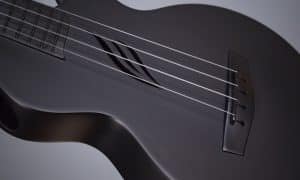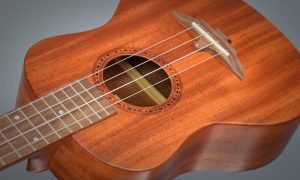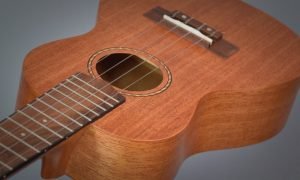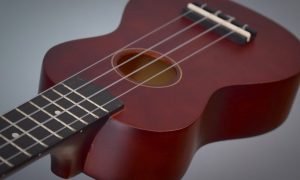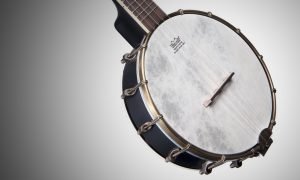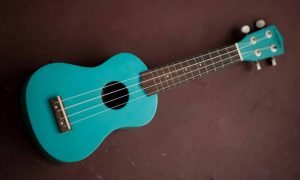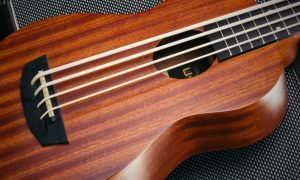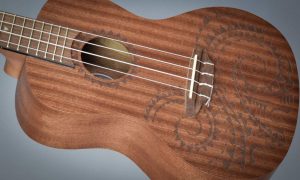Concert vs. tenor: What’s the difference? Which is best? Which should you buy?
In this article, I’m going to talk about the differences between concert and tenor ukuleles.
Recommended Concert & Tenor Ukuleles
Concert Vs. Tenor Ukes: What’s Similar
I want to start out with an important shared characteristic of concert and tenor ukes: They’re both tuned to the exact same notes and are played the same way.
Concert and tenor ukuleles both use standard ukulele tuning: G-C-E-A.
The notes, chords, and scales are identical on concert and tenor ukuleles. This means that if you can play a concert, you can play a tenor.
Which is Better: Concert or Tenor?
In my opinion, there isn’t a “best” ukulele size. Concerts and tenors each have qualities that might lead some players to prefer one over the other, but I really can’t say one is any better than the other.
The differences between concert and tenor ukes aren’t as extreme as some sources might lead you to believe. While it’s good to have a basic understanding of what separates the two sizes, try not to worry that you’ll somehow end up with the “wrong” size. As long as you like the uke, it’s the right size for you.
After reading this article you might decide that a particular size is a better fit for you, but remember that many players end up owning both concert and tenor ukuleles and love playing them equally!
Differences Between Concert and Tenor Ukuleles
In this section, I cover the differences between tenor and concert ukuleles.
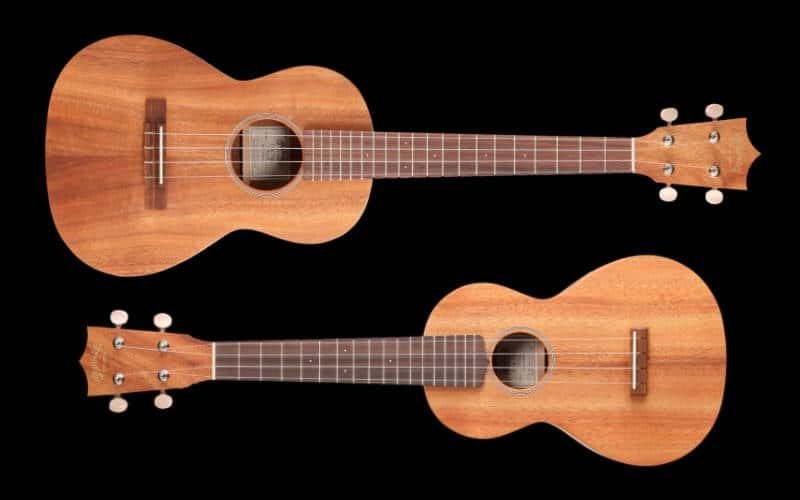
Size
The most obvious difference between a concert and tenor ukulele is size. Here are some basic stats:
- Tenor ukes are bigger than concert ukes
- Tenors are the largest of the three most common ukulele sizes (soprano, concert, tenor)
- Tenors are usually around 26″ long
- Concerts are usually around 23″ long
The exact measurements of concert and tenor ukulele will vary depending on the manufacturer, but they’ll generally be pretty close to the figures above.
The difference in body size between a concert and tenor uke isn’t as big as some people might think. In most cases, the actual body of a tenor (not including the neck) is only 10% larger than a concert.
Tone
As a general rule, increasing the body size of an acoustic instrument results in more volume, bass, and warmth. This is why tenor ukuleles are usually a little fuller and richer sounding than equivalent concert ukes.
Of course, some people are drawn to the slightly more bright and sparkly tone of a concert. It’s really just a matter of personal preference.
It’s important to keep in mind that body size isn’t the only factor that determines tone. A uke’s voice is shaped just as much (if not more) by design, build quality, and materials. For example, a high-quality, solid wood concert ukulele will probably sound better than a cheap, poorly-built tenor uke made with laminated wood.
Tenor ukuleles have a higher string tension, which can result in a bit more volume and projection (more on string tension below).
I’m often surprised by how similar concert and tenor ukuleles can sound, so I don’t want to give the impression that tenor ukes are somehow “better” than concerts!
Scale Length
Another difference between concert and tenor ukuleles is scale length.
- Concert ukes usually have a 15″ scale
- Tenor ukes usually have a 17″ scale
Scale length is the distance between the nut and the saddle. The nut is the white piece at the top of the neck and the saddle is the white piece on the bridge. I’ve highlighted these two parts in the diagram below.
You can also think of scale length as the measurement of the section of the strings that vibrates when you play.
Among other things, scale length determines the spacing of the frets (metal bars on the neck). The frets are a little closer together on a concert and a little more spread out on a tenor.
In terms of playability, a concert ukulele may be a little easier for people with smaller hands while a tenor might be a bit more comfortable for folks with larger hands.
While this variation in fret spacing is certainly something to consider when choosing a ukulele size, I think the difference is subtle and not something you need to obsess over. Many people own both sizes and easily switch between the two without any problems.
A longer scale length also results in a higher string tension, which I talk about in the next session.
String Tension
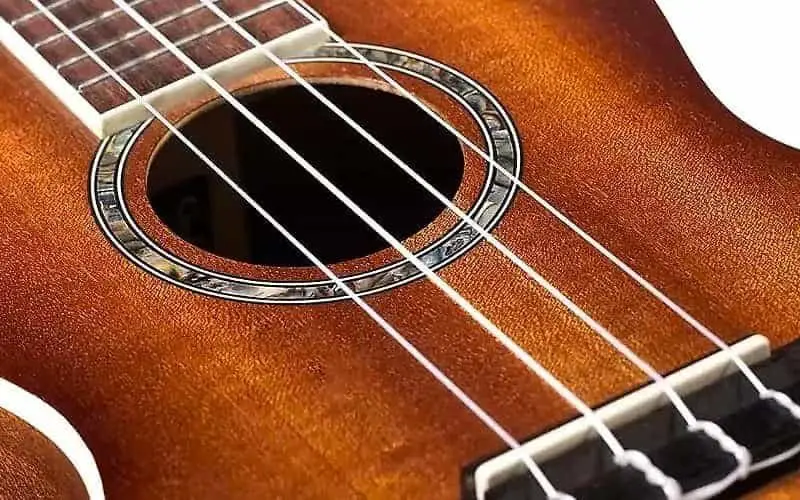
Tenor ukuleles have a higher string tension than concert ukes, which means that the strings will feel a little tighter on a tenor uke.
In most cases, tenor ukes have around 35% to 50% more string tension than concert ukes. While this sounds like a lot, it doesn’t translate into a huge difference in what you actually feel when you play the two sizes.
As I touched on above, the increased string tension of the tenor allows players to “drive” the instrument harder and generate a bit more volume. I think the difference is subtle, and it seems to be more noticeable on some tenor ukes than others.

Fretboard Length
Most concert ukuleles have a fretboard that joins the body at the 12th fret, while most tenor ukes have a fingerboard that joins at the 14th fret. In other words, the neck of a tenor uke sticks out two frets more than a concert (about one inch).
The extra clearance on a tenor ukulele makes it a little easier to access the higher frets.
Some advanced players might enjoy having the tenor’s extra room when playing in a higher register, but for most folks it’s not going to be a factor.
Price
A tenor ukulele is usually more expensive than an equivalent concert uke.
In most cases, the price difference is around 5% to 15%, although I’ve seen tenors that are as much as 25% more expensive than concerts.
While the price difference might only add up to five or ten dollars with beginner ukuleles, it can be hundreds of dollars in the case of high-end brands.

You Might Also Like...
-
Ukulele Sizes: The Complete Guide to Different Uke Sizes
Confused about uke sizes? This guide explains the different ukulele sizes (soprano, concert, tenor, baritone) and discusses which sizes are best for beginners.
-
The Best Beginner Ukulele: My Top 7 Picks
Finding the best ukulele for beginners can be overwhelming. In this guide, I look at good beginner ukuleles that fall within the $50 to $100 price range.
-
Best Tenor Ukuleles: 2022 Reviews and Buyer's Guide
Finding the tenor ukulele best suited to your needs will depend on budget, skill level, and personal preferences.
-
How to Buy A Ukulele: The 2024 Ukulele Buying Guide
You've decided to buy a ukulele, now what? My ukulele buying guide will help you choose a ukulele that meets your needs and budget.






